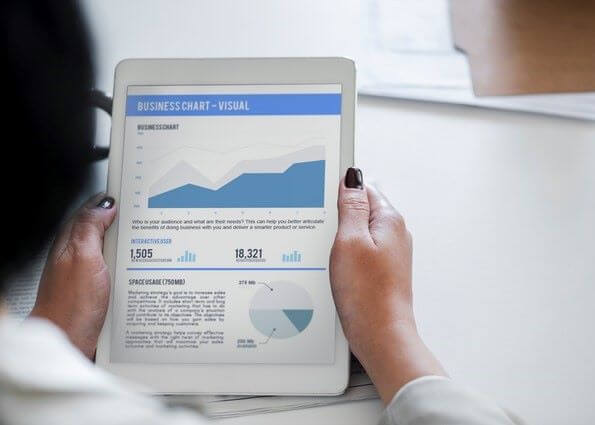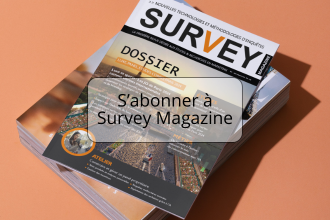Reporting in real time
Reporting in real time is not a new idea. This is an essential application for companies to work well, as well in the management fields as in the commercial or industrial monitoring. Many CRM and Datawarehouse tools were developed to manage the information mass useful to the management of the firm. These applications are destined to computing teams and big accounts consulting and enable the users to quickly quit dashboards with numbers with a simple request.
An increasing demand in the surveys’ world
In the marketing surveys’ world, the demand for reporting in real time is
highly present and comes from both customers and surveys’ professionals:
customers want to faster benefit from the treatments and explore them
according to their chosen criteria while survey designers want to enable
customers to make the details’ boards that he/she would need in addition
to given analyses at the end of a survey.
In many services, the propagation of satisfaction barometers (marketing,
audit, quality, training, HR…) creates needs of a quick and permanent
access to results with the ability to display them per region, service,
product, period, etc.
Highly heterogeneous solutions
The likely techniques to enable this dynamic reporting were quite limited
until today. Usual reporting tools cited above were not really adapted
to the surveys’ world (both in terms of functionalities and cost of
application).
The three main strategies designed by institutes and companies consisted
in:
- Online upload the results from the treatment software by regularly
updating them.
- Add a touch of dynamism through an internal specific computing
development or via an external service provider.
- Equip the customer with a treatment tool more or less trained in
order to enable it to give the result by itself.
First strategy (static publication) does not bring anything new and
simply correspond to a provision of defined treatments on a modern
support. It demands that the treatment software is able to produce
results into HTML format, in order to avoid tedious work of boards’
rearrangement in that format.
The second strategy (development on demand) enables the final customer
to have a real dynamism but limits are quickly reached because of the
needed computing investments costs. Many developments like this are
presented as tools but they struggle to generalize themselves and have
to be used for delimited utilizations.
The third strategy (equipment) enables to give a real treatment power to
the final customer, but this creates risks such a wrong utilization of
data and treatments, and a training to control the tools is needed.
Moreover, it does not enable a dynamic access to data during a survey
for instance.
WEB Reports, online dynamic and personificable reporting
A new generation of tools is already in place on the market of online
reporting of surveys’ results with the democratization of WEB Reports
software edited by Soft Concept. This innovative tool that corresponds
to a need not yet satisfied implants itself really quickly in the big
accounts (SNCF, Crédit Lyonnais, Axa…) and in some surveys’ institutes
(Orphée…).
With WEB Reports, we can think about quickly generate real interactive
applications of dynamic access to results of all kinds of surveys or
barometers. The final user can consult the results through a browser.
The internet application or intranet application that he/she accesses
enables him/her to ask for selections in which he/she is interested, by
identifying him/herself. It is simple and convivial and it has the
ergonomics of a classical website (menu on the side or above, links to
be clicked, etc.).
With this kind of tools, the surveys’ professional can propose a dynamic
support and additional to the paper by being sure to manage it in a
short time (some hours or some days in total autonomy without any
computing development). However, a WEB Reports application can take
models of pages realized by webmasters or given by the customer for a
more important personalization. It is also able to take specific
developments previously realized or to integrate “house made” methods.
The cast-off limits
WEB Reports enables to integrate several data sources such as several years of history parallel to an online survey or a phone survey. The aftercare of solutions is made in real time. Barriers enable to limit the access according to threshold and periods that may be previously defined. It is able to regularly inject data coming from other sources (optical reading, face to face inputs…). WEB Reports also brings a big safety into accesses. A director or a region cannot accede to results of another region and the national director disposes of the synthetic results per region.
Working principle and used technologies
A WEB Reports application does almost not comprise boards of static numbers. It conversely is built of a set of personalized treatments demands, the associated data, the browsing screens in the results into web format (that generally use the graphical chart of the customer) and especially of the dynamic treatment engine that instantaneously answer to demands of the customer selection, from the simple crossing to advanced mappings.
- Treatments definition: First step consists in designing a set of
selections (boards and graphics) with a treatment tool such as ETHNOS or
STAT’Mania DataMining on our own PC. These tools enable to effectively
define several treatments demands, to determine several presentations
for each selection (boards, graphics, indicators, colors…) and to
reorganize them into report pages and dashboards. It also is interesting
to define selection criteria parallel to the selections, which will be
able to be applied to the set of treatments or to a précised selection.
- Data format: Every formats managed by treatments tools can be
linked to WEB Reports. This comes from binary files and Ascii to Excel
files, DBase, Access, OMR Manager (optical reading), CAPI, CATI. It is
possible to couple WEB Reports to an online survey. Treatments take the
new data into account for each addition or modification of an
observation or an individual.
- Accesses organization and users declaration: The WEB Reports user
must define who are the users, what are the intended treatments (actual
and future) for each and what treatments are forbidden (for instance,
the result of another region). This preliminary work is needed for a
clarification and a simplification of the architecture (gathering of
similar treatments that differ by a selection criterion…).
- Creation of pages to access to the treatments and to the selection
criteria: In WEB Reports, the survey responsible person builds the
general arborescence of the application in an assisted way, by defining
different options enabling to realize the 3 basis operations or a
combination of these operations: display a treatment, apply a selection
criterion, pass to another menu. Other options enable to associate Web
pages, link, multimedia…
- Utilization of the graphical chart: WEB Reports is furnished with
models of access pages enabling to respect the wanted graphical chart by
changing logos and colors. The survey responsible person also can use
the patterns given by the customer.
- Starting: Once the setup of the WEB Reports application is made,
the survey responsible person can test it on his/her own device or on
the local network before laying it on the Web. When it is laid on, the
survey responsible person can put its application on the standard Web
server with all the links without using complementary products.














